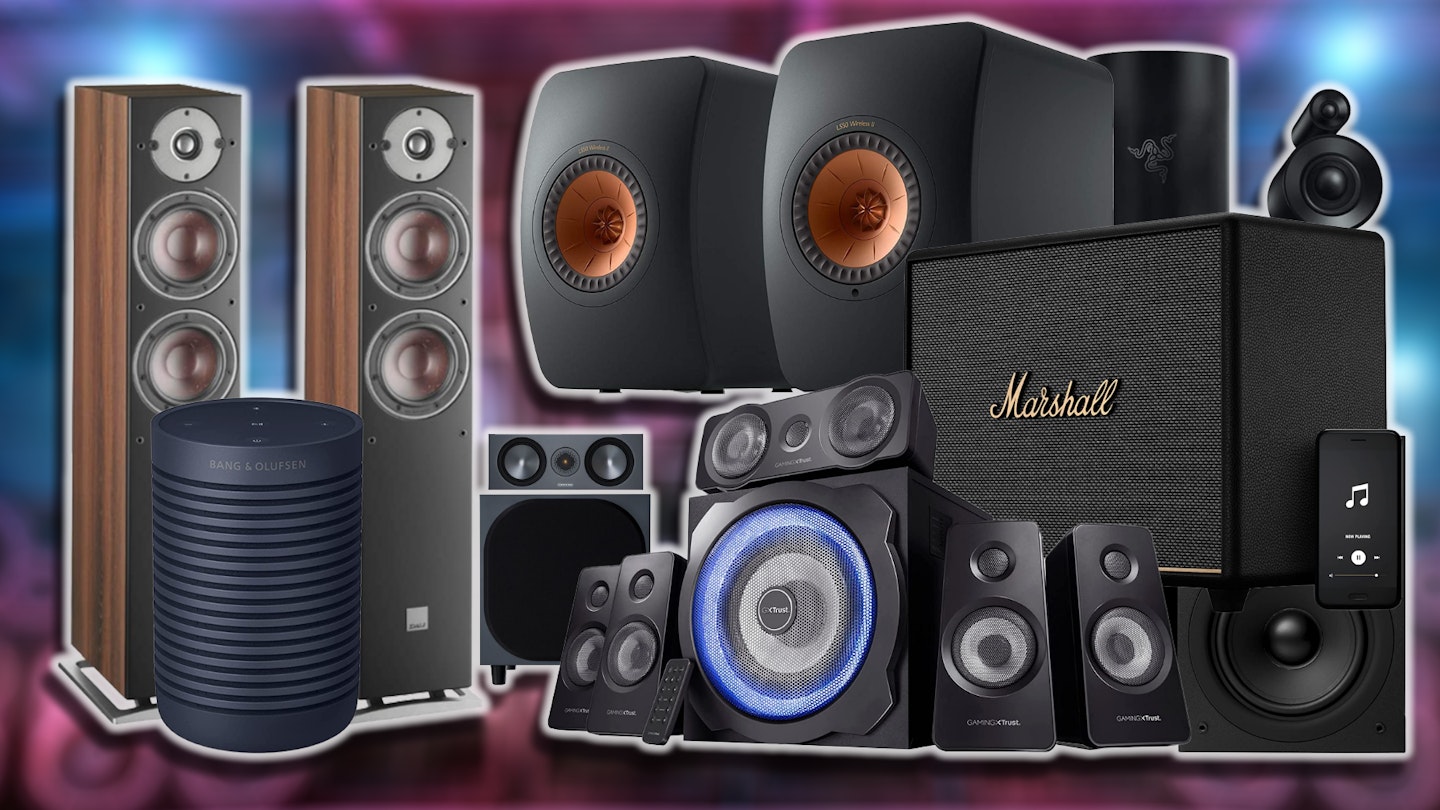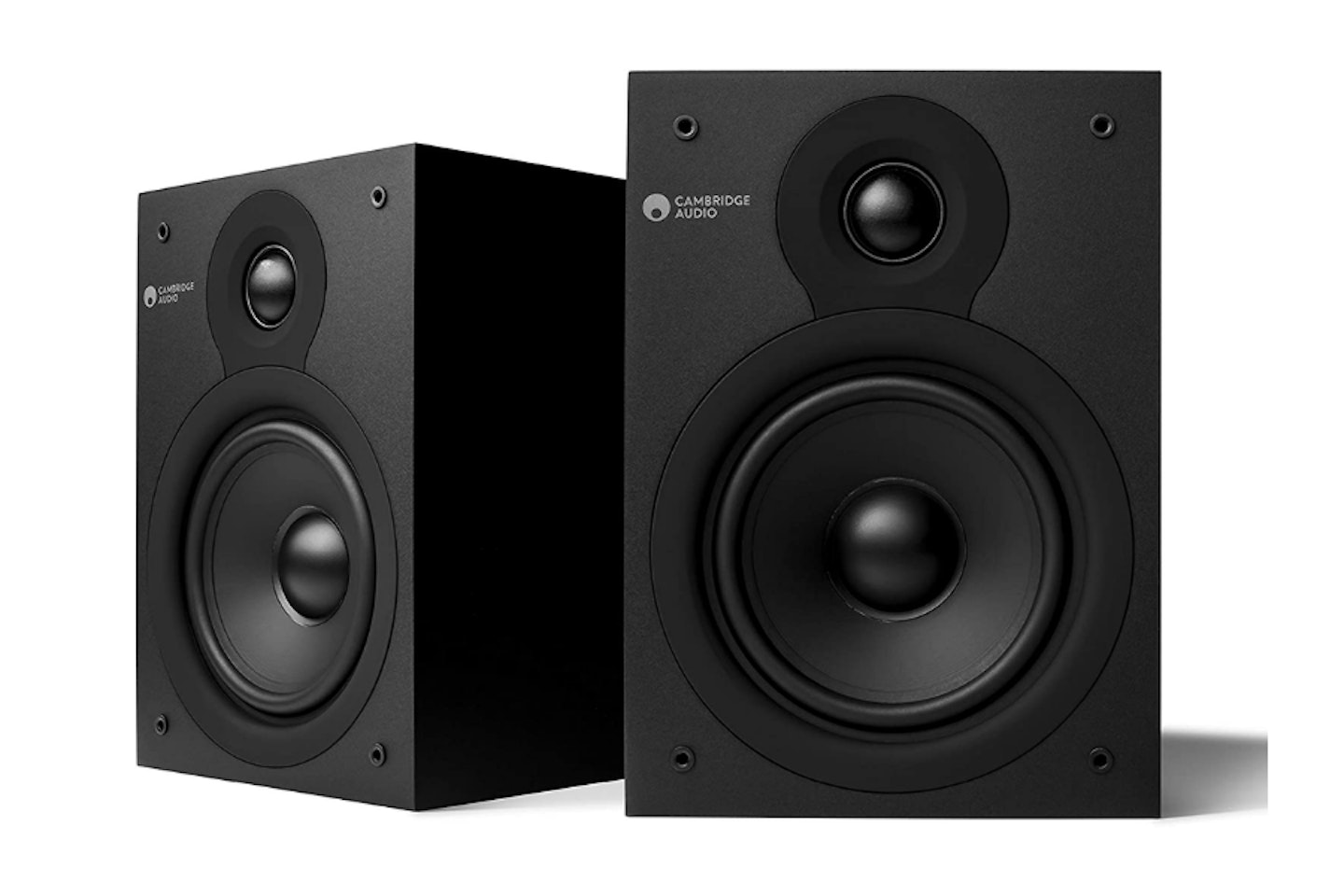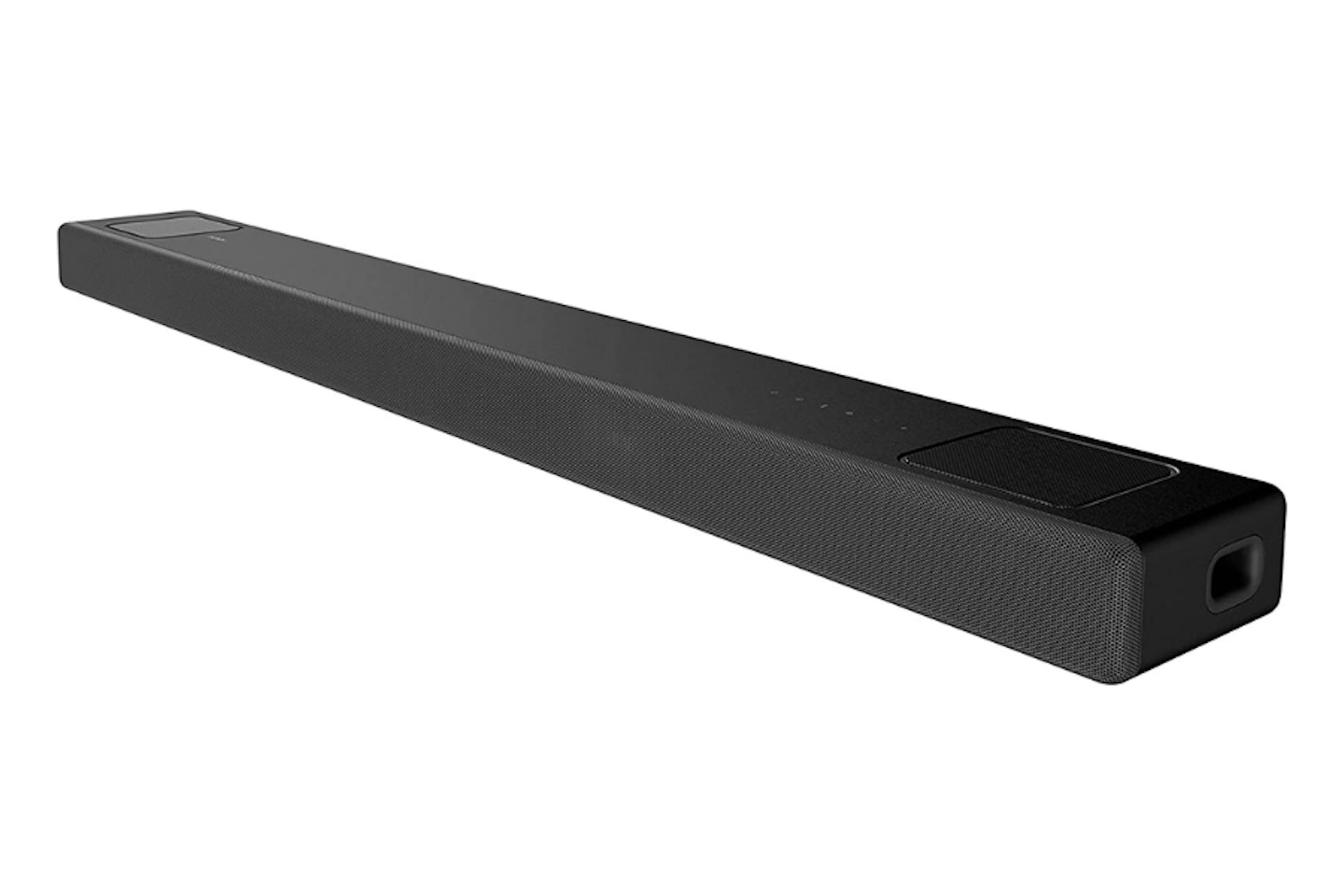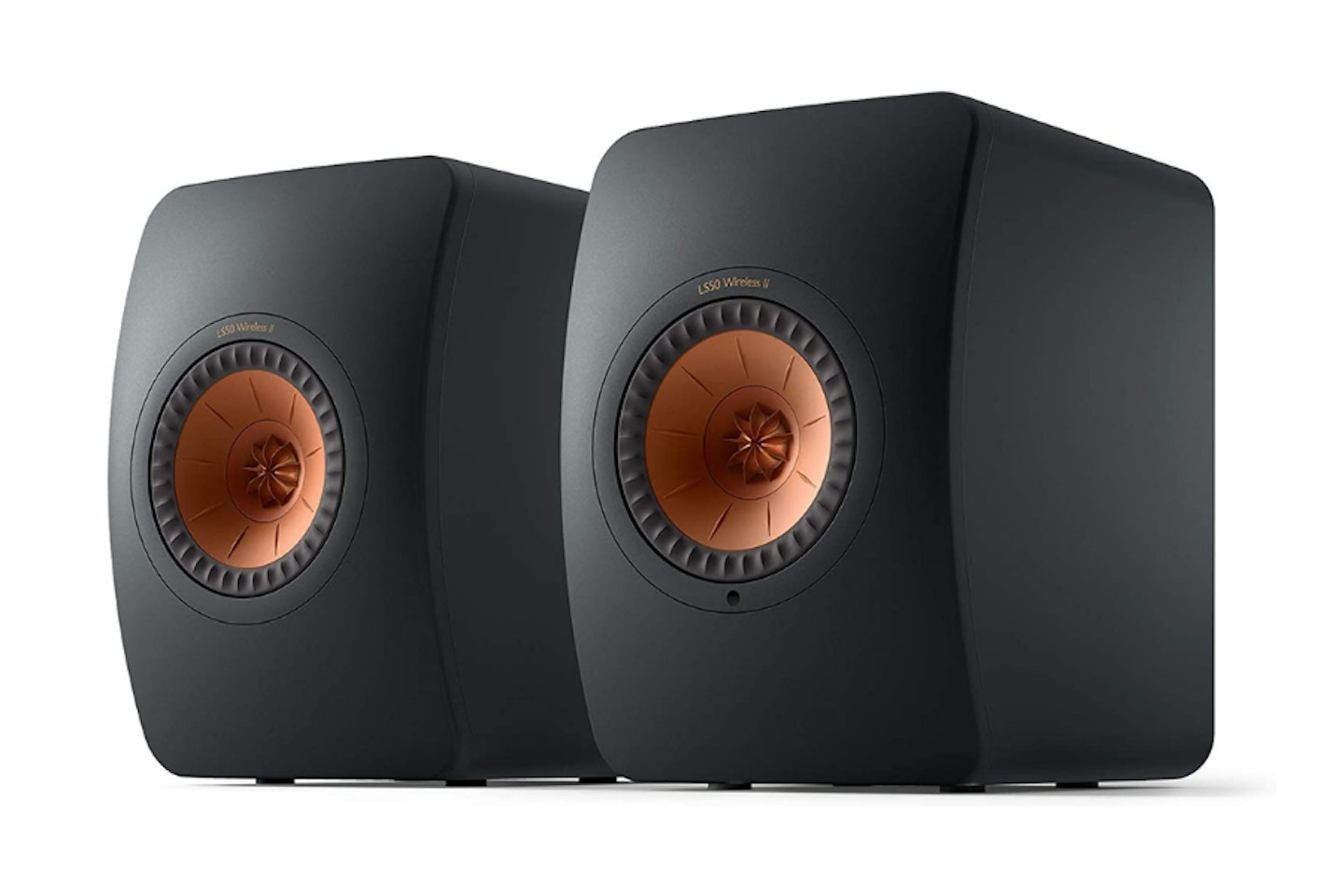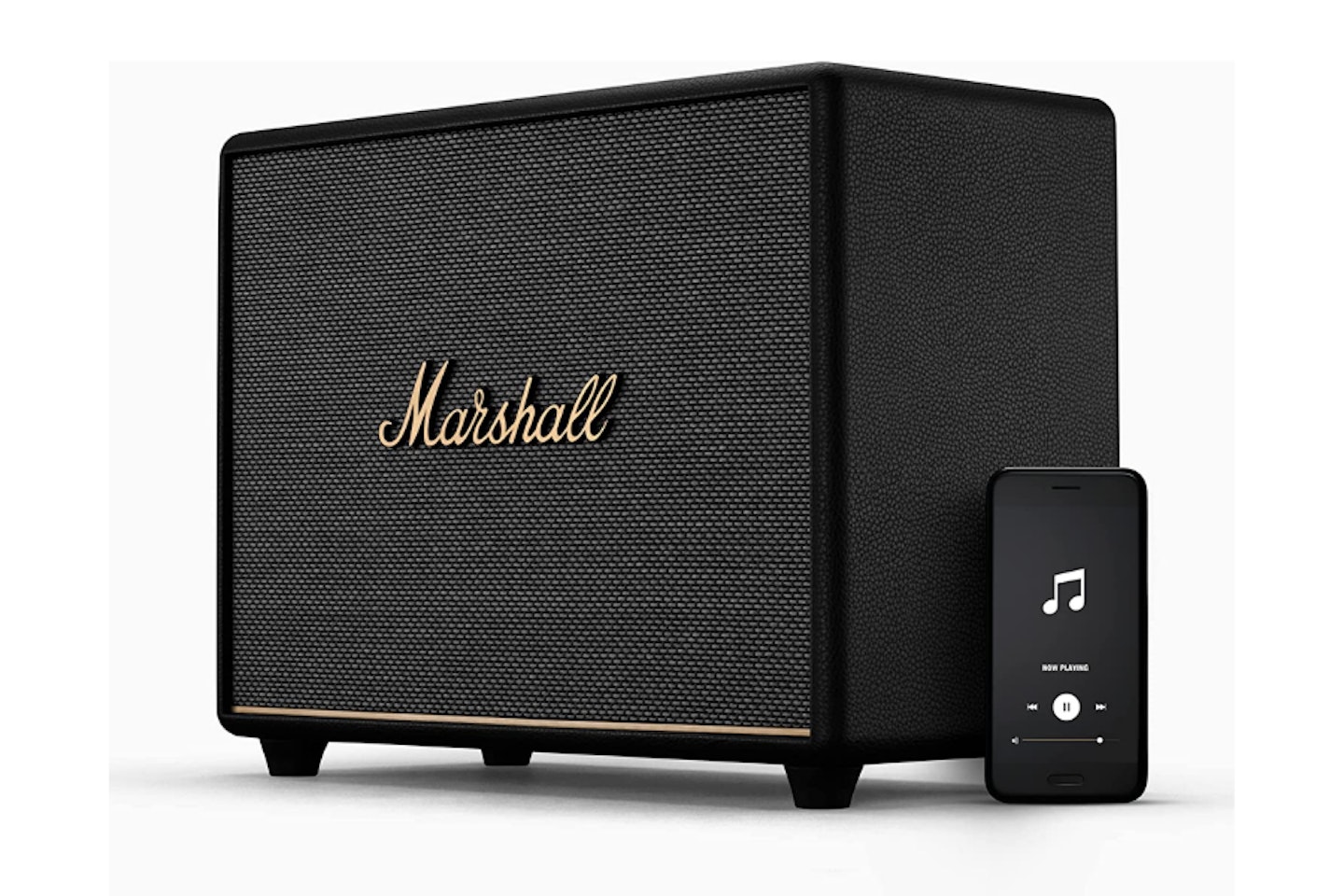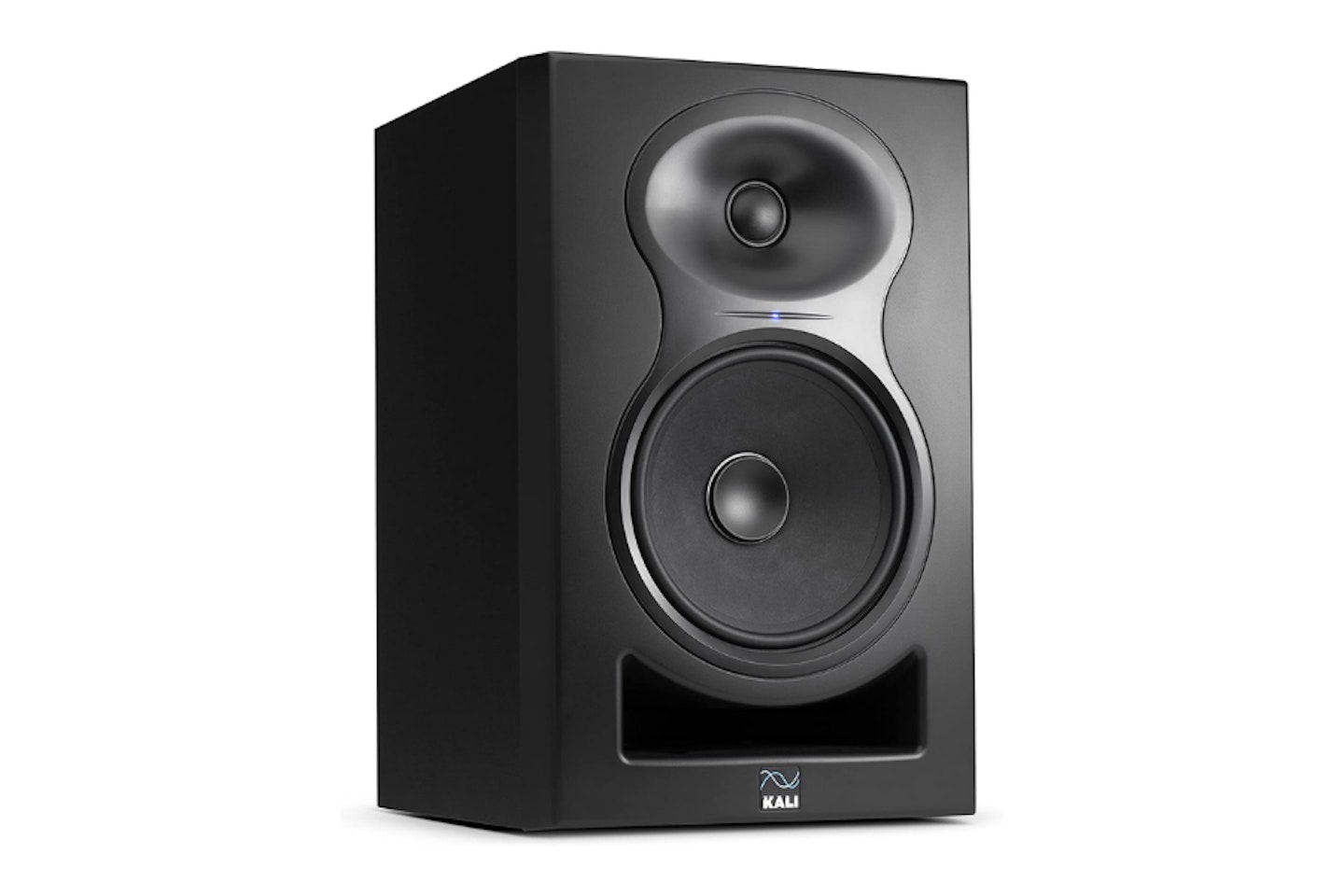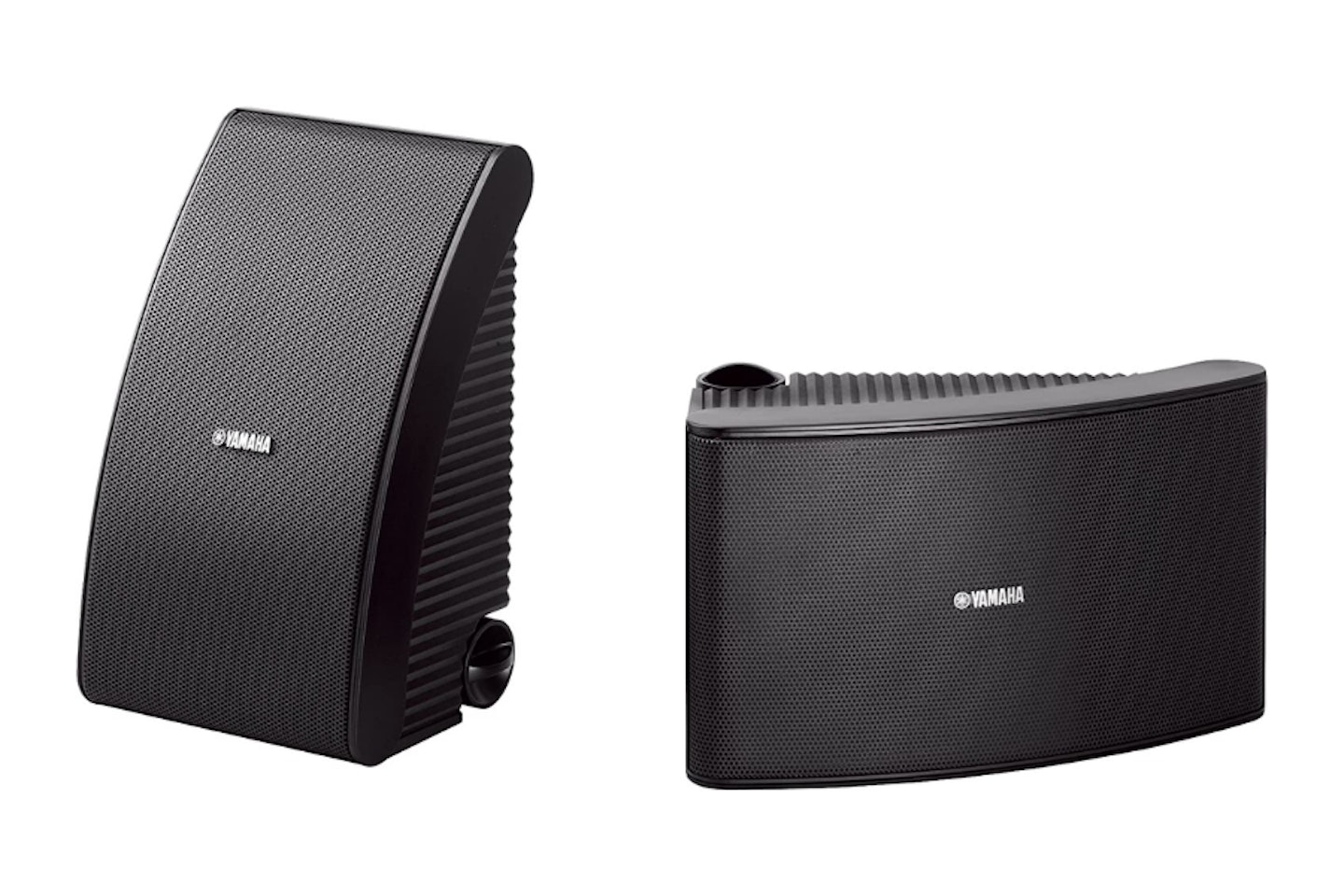Just think, you could take your enjoyment of your favourite music to a whole new level with one simple decision - to buy the best speakers. It might bring your movie nights to life - your 4K TV will finally have quality sound to match. Replayed through decent home cinema speakers for your TV, the classic movies that shaped your childhood regain their broad soundstage and immersive effects. But that's just the beginning of upping your audio game.
Hearing music through a seriously good set of speakers is a priceless experience. Relive your music collection and bring a new dimension to your favourite music streaming services. It needn't cost the earth. You're now spoilt for choice too, with everything from portable speakers to surround sound gaming systems and more. So, which is the best speaker choice for you?
Thanks to a multitude of technical innovations, size is no longer synonymous with quality or power. There are options for everyone, from large floor-standing speakers and bookshelf speakers for music lovers to multiroom systems and wireless speakers for those who like their smart streaming tech. There are even speakers for parties outdoors and some portable options for listening on the move.
Best speakers of 2025 at a glance
• Best overall: Monitor Audio Bronze 5.1 Speaker Package – View on Richer Sounds
• Best budget : Cambridge Audio SX-50 Bookshelf Speaker – View on Cambridge Audio
• Best for TV: Sony HT-A5000 premium 5.1.2 channel Dolby Atmos Soundbar – View on Smart Home Sounds
• Best wireless: KEF LS50 Wireless II – View on Amazon
We have a buyer's guide to help you narrow things down, plus some frequently asked questions and a handy glossary at the end of the article. The best speakers of 2024 and a whole new world of sound are cued up and ready to play.
The best speakers of 2024
Best overall
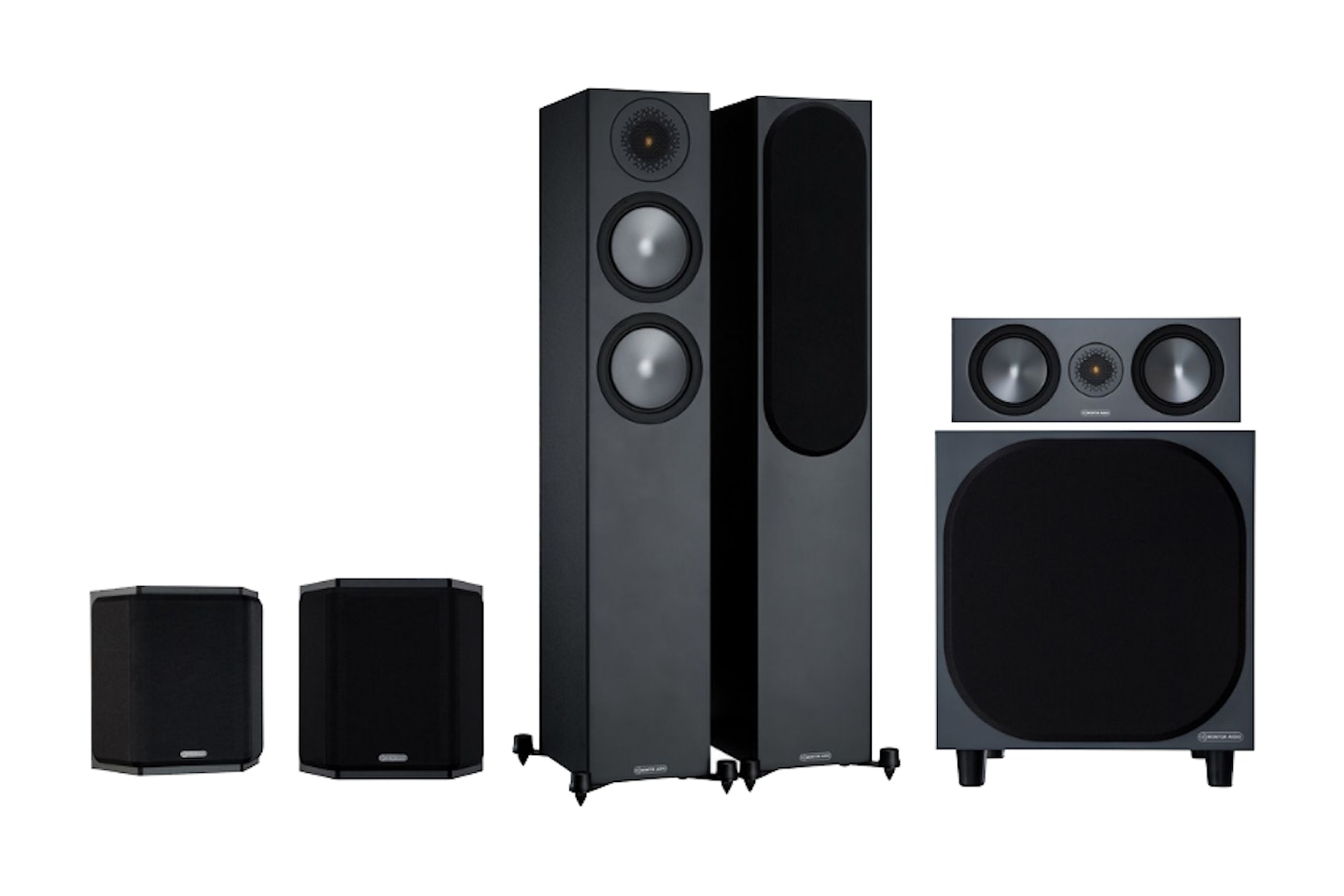
www.richersounds.com
Monitor Audio never fails to impress when it comes to the perfect combination of refined looks, function and performance. So, with that in mind, you'll see why we've chosen speakers from its Bronze range for our top spot. With Silver, Gold, Platinum and other premium product ranges, the Bronze has cemented itself as the best of all worlds in the universe of high-quality speakers. They manage to tick the audiophile box in terms of looks and sound quality, at the same time as being affordable for the serious home cinema fan on a non-audiophile budget.
We picked these for sheer quality, but of course, this comes with a premium price tag. So, if you want more choices, check out our guide to the best surround sound system. But this bundle is an incredible deal right now - it includes two floor-standing Bronze 200 speakers, two FX 6G surround speakers, a C150 centre speaker, and a W10 6G subwoofer. Altogether, you're looking at well-balanced and focused sound with excellent cabinet engineering. They boast a wide, cinema-like sound field too, so when you add the 220-watt sub to the mix, you have a serious cinematic experience in store.
Pros
- Amazing audiophile-level experience
- Solid cabinets for the best sound
- They look seriously good
- Choice of finishes
Cons
- Not a great option for smaller rooms
| Speakers: | Bronze 200: 2 x 51/2" C-CAM midbass driver. 1 x 25 mm C-CAM Gold Dome tweeter with UD Waveguide | C150: 2 x 51/2" C-CAM mid-range driver. 1 x 25 mm C-CAM Gold Dome tweeter with UD Waveguide | FX 6G: 1 x 51/2" C-CAM mid-range driver. 2 x 25 mm C-CAM Gold Dome tweeter with UD Waveguide | W10 6G: 1 x 250 mm (10") C-CAM subwoofer driver featuring a 2" long-throw voice coil |
| Impedance: | Bronze 200: 8 ohms | C150: 8 ohms FX 6G: 8 ohms | W10 6G: 20 kOhms input impedance C150: 8 ohms | FX 6G: 8 ohms | W10 6G: 20 kOhms input impedance |
| Frequency range: | Bronze 200: 35 - 30,000 hz | C150: 66 – 30,000 Hz | FX 6G: 74 – 30,000 Hz | W10 6G: Lower: -3 dB @ 29 Hz / -10 dB @ 25 Hz. Upper: -6 dB @ 150 Hz |
| Power: | Bronze 200: 120 W 88 dB | C150: 120 W 88 dB | FX 6G: 80w 86db | W10 6G: 220w |
| Weight: | Bronze 200: 12.8 kg | C150: 7 kg | FX 6G: 3.9 kg | W10 6G: 13.4 kg |
| Dimensions: | Bronze 200: 166 x 886 x 265mm | C150: 166 x 451 x 225 mm | FX 6G: 287 x 284 x 124 mm | W10 6G: 366.5 x 321 x 364 mm |
| Extra features: | Bronze 200 / C150 / FX 6G: Bi-wireable, Audio transparent bespoke cloth-covered magnetic grilles | W10 6G: Long-throw 10" (250 mm) driver featuring ‘dished’ C-CAM |
- Customer review: Bronze 200 speakers - "I bought these and the matching AMS Atmos speakers and the sound is unreal! The ported rear on the Bronze 200 make the bass sounds tight and allows the sub to do its' thing nicely. Beautifully finished, and extremely well made as you would expect from Monitor Audio. The stands have options for carpet or hardwood flooring which adds to the value."
Best budget
Truly great bookshelf speakers are defined by two things: their ability to fit where you need them to and to do so without compromising on sound quality. Cambridge Audio are another speaker brand that prides itself on building a loyal customer base by consistently offering gear that would be easy to confuse with high-end audiophile kit. The SX-50 speakers really exemplify this unique approach to design and build, proving that you don't need to break into the hundreds or thousands of pounds price bracket to enjoy rich and balanced music.
These speakers have soft dome tweeters made from treated silk alongside the 135mm cones, all inside a compact CAD-designed cabinet. Perch these on the end of your shelf or at the end of the desk, and you'll be glad you did - especially if space is at a premium.
Pros
- Very compact
- Excellent exterior design from a rated brand
- Well engineered drivers
Cons
- Portability could be improved if they were Active speakers with Bluetooth
| Speakers: | 5.25” (135mm) treated paper cone woofer 1” (25mm) Silk dome tweeter |
| Impedance: | 8 Ohms |
| Frequency range: | 50Hz-22kHz |
| Power: | 100W 87dB |
| Weight: | 3.0kg |
| Dimensions: | 225 x 161 x 240mm |
| Extra features: | n/a |
- Customer review: "Stunning sound for small speakers comparable to the sound from my full sized wharfdale speakers. Bass is excellent for a small speaker indeed they even supply foam mufflers to insert in the bass reflex hole in the back of each.box. Very good service and nicely packed to ensure no damaged during transit. I use with my Denon amplifier and would highly recommend"
Best wireless
The masters at KEF have clearly been working overtime to come up with this far-from-budget wireless stereo speaker system. In all aspects, these are nothing short of wonderous in both sophisticated design and the entire concept, right through to the build and, of course, the sheer scale and quality of sound. So, what makes these LS50s worth the slightly eye-watering two-and-a-half thousand pounds?
Firstly, they're Active, and they come as a pair. What that means is you can use them to achieve that true spatial stereo effect but also treat them as your perfect multiroom and streaming music partner as well. It'll link up with Amazon Music, Spotify, Apple Music and many more - so you're all set for some wireless tunes of the highest quality. Secondly, thanks to plenty of wired connection options, the LS50s could even be used with your TV or record player setup; the fact that they're Active - meaning they have a built-in amplifier - makes for a neat clutter-free solution. But surely, any amplifier that fits inside a speaker is going to be a poor replacement for a full system, right? Not this time. KEF's Uni-Q speaker tech has been paired with its Metamaterial Absorption Technology. This eliminates 99% of unwanted noise from the rear of the driver, resulting in a more natural sound. And last but not least, these pump out 200 watts per speaker. Legendary power and performance.
Pros
- The sound quality is nothing short of incredible
- Amazing design and build
- Multiple use cases
- Wireless and analogue inputs
- Supports more streaming services than we've ever seen in one unit
Cons
- Very heavy bass lovers may still want a subwoofer.
| Speakers: | 1x 25mm tweeter, 1x 130mm mid/low |
| Impedance: | n/a |
| Frequency range: | 40Hz – 47kHz |
| Power: | 200 watts per speaker. 108dB |
| Weight: | 7.2 kg |
| Dimensions: | 30.5 x 20 x 31.1cm |
| Extra features: | Bluetooth, Wifi, LAN |
- Customer review: "With support for Hi-Res Audio, an expansive soundstage, and excellent detail and dexterity, audio quality is nothing short of fantastic. Add to this a vastly improved Kef Connect app, the ability to adjust the EQ settings, and a blissfully easy setup, and you have yourself a pair of stereo speakers that can really do no wrong. That balanced sound may not appeal to bass-heads, and the vast array of inputs may be lost on those who are simply looking for a Bluetooth speaker for background music. However, for analytical listening, boosting your TV’s weak built-in speakers, or blasting your favourite vinyl on your turntable, the LS50 Wireless II are a dream.
"I'm using these in conjunction with a £260 Q Acoustics 3060 subwoofer and it's not even turned up past 30%. The LS50 Wireless II sound incredibly well balanced, displaying great stereo separation and a wide enough soundstage to truly fill any room with detailed, clarified audio."
Best wireless standalone speaker
Best wireless standalone
During our in-depth review of the Marshall Woburn III, we found that it really did deliver on its iconic reputation as the mainstay speaker brand for rock, metal and everything else for that matter. Here, we have the Marshall signature sound - loud, immersive, and full of mid-range.
Its predecessor, the Woburn 2, lacked the extra pair of cones that this employs to fill the tonal gap between bass and treble. The soundstage is super-wide, with room-filling volume. And when you're done shaking the floorboards to rock and roll, you could even hook the Woburn 3 up as a television or home cinema speaker too, thanks to the HDMI ARC input. This is a beast of a standalone wireless speaker that elevates every type of music you put through it. It's easy to set up, more than looks the part, and the build quality is second to none.
Read our full Marshall Woburn 3 review
Pros
- Faithful but fun audio quality
- Works at high and low-volume
- Tons of bass
- Hugely attractive styling
Cons
- No carrying handle
- No guitar input
| Speakers: | Stereo bass reflex |
| Impedance: | n/a |
| Frequency range: | 35–20,000 Hz |
| Power: | 150w. 100.5 dB @ 1 m |
| Weight: | 7.45 kg |
| Dimensions: | 400 x 317 x 203 mm |
| Extra features: | Bluetooth, Adjustable bass and treble control |
- Our review: "I've had several Marshall guitar amps over the years and wrongly assumed their home speakers were a bit of a novelty. I couldn't have been more wrong, and to my enormous surprise the Woburn 3 somehow managed to deliver the same crushingly powerful sound I'm used to hearing from my amp to whatever music I'd played through it.
"Dial it back a bit or put on something quieter and it's also capable of subtlety, with rich and nuanced tone even at lower volumes. But where it's really impressive is at full whack where the sound is so immersive it feels like you're swimming in it.
"Downsides? No carrying handle means you can't take it everywhere with you (and you'll want to) while its slightly awkward shape means you'll need a lot of space on your TV unit to make use of the HDMI Arc connectivity. And again, this is a really great function that expands the breadth of its abilities." Tried and tested by Adam Binnie, Affiliate Operations Editor
Best floor-standing

When we wrote our review of the Audio Pro A48 speakers, we also looked at other prime examples of floor-standing speakers too. However, the Oberon 5 speakers from DALI are fast emerging as a popular floor-standing set for multiple uses. In fact, DALI itself is a firm favourite among audiophiles and casual listeners alike, the brand becoming synonymous with exciting yet refined looks and astonishing power and clarity. Here, we have floor-standing speakers rated at 150 watts, so they've got enough punch for a hi-fi or home cinema amplifier.
The bass from these speakers is felt as much as heard, with deep resonance balanced by the well-integrated mids. The drivers in the Oberon 5s are engineered for less harmonic distortion and a wide field of operation. This means you have much more freedom when it comes to placement. If you're looking for power and contemporary design, you've found it.
Pros
- Deep and powerful bass
- Unrivalled sophisticated yet modern looks
- Room-filling volume
- A choice of Black Ash, Light Oak, Dark Walnut and White
- Less harmonic distortion than others
Cons
- Requires more space to fully appreciate
| Speakers: | Bass / Midrange 2 x 130 mm. Tweeter 1 x 29 mm fabric dome |
| Impedance: | 6 Ohms |
| Frequency range: | 39 - 26.000 |
| Power: | 150w. 108 dB |
| Weight: | 10.8kg |
| Dimensions: | 162 x 830 x 283 |
| Extra features: | Patented SMC disc that greatly reduces mechanical distortion |
- Customer review: "Now nearly run in I continue to be amazed at the musicality of these speakers. Does not matter what genre of music you send them they acquit themselves so well you forget they are there – it is all about the music after all. The soundstage is wide and three-dimensional and the speakers keep bringing out new elements of album tracks that I had previously missed.
"Play them loud or quiet and they seem to adjust; filling the room with music. Worth saying that they are also very handsome and complement the room without being intrusive. They seem very unfussy about positioning, delivering a strong bass line and remarkably detailed upper frequencies. I have nothing negative to say as they have met and exceeded my expectations."
Best bookshelf speakers
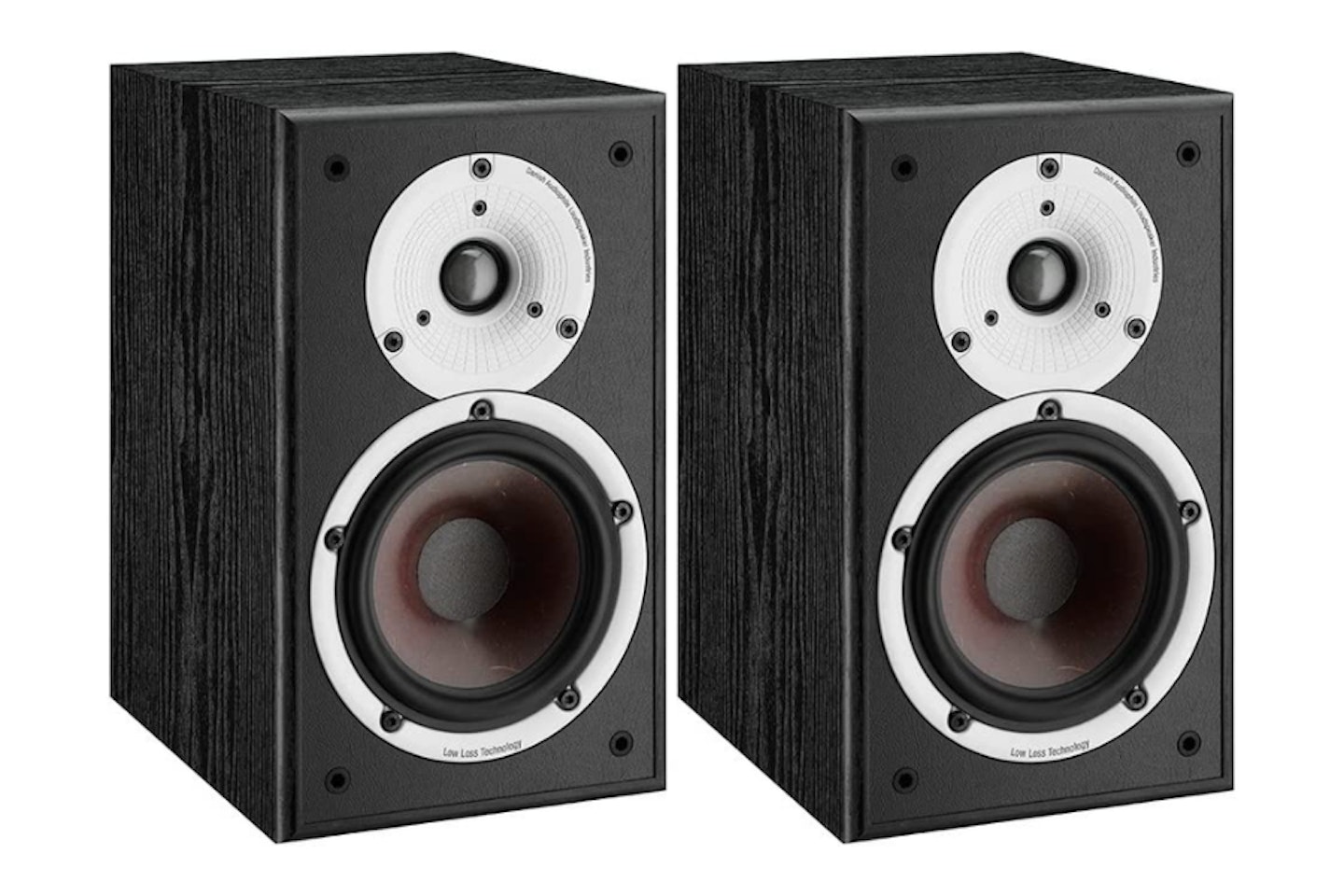
Bookshelf speakers are sometimes seen as the poor cousin of tall floor-standing models. But as we covered in our guide to the best bookshelf speakers, this is certainly not the case here. DALI's Spektor 2 boasts enough bass to fill a medium-sized room. They could even be front speakers in a home cinema setup due to the larger diaphragm areas of the 130mm bass/mid driver and the 25mm dome tweeter.
All that said, the main thing that plagues many bookshelf speakers is audio distortion caused by colliding harmonics. When smaller speakers get to a certain size, they run the risk of muddied sound due to the proximity of the cones and domes. This can be made even worse when the speakers themselves are angled towards the listener. The exceptionally spacious sound in the Spektor 2s overcomes this by design. Therefore, DALI says that its speakers should not be angled inward. So, you can expect these to look great squarely placed on the shelf or against the wall.
Pros
- Legendary sound from an equally legendary brand
- Excellent room-filling bass and mids
- Compact
- Wide sound dispersion
- Includes wall brackets
Cons
- May need 'running in' for 100 hours to sound their best
| Speakers: | 130 mm bass/midrange driver and 25 mm dome tweeter |
| Impedance: | 6 Ohms |
| Frequency range: | 54 - 26,000 Hz |
| Power: | 100w .84.5dB |
| Weight: | 8.4kg |
| Dimensions: | 292 x 170 x 238 mm |
| Extra features: | n/a |
- Customer review: "I needed to replace the speakers I use with my Onkyo A-9010 44-watts per channel amp after they got blown at a children's party. A website called Paarc A Hi-Fi Enthusiast strongly recommended Dali Spektor 2s. I hooked them up earlier this evening, and the sound is magnificent.
"The instruction manual says they need to be “run in” for at least 100 hours before they reach their full capacity. It's hard to believe that it could be much better than it is after the half an hour's listening time I’ve already had! Thanks to what I can only call their tremendous clarity of sound, the speakers enable you to hear aspects and subtleties of the music that you previously would have missed."
Best PC speakers
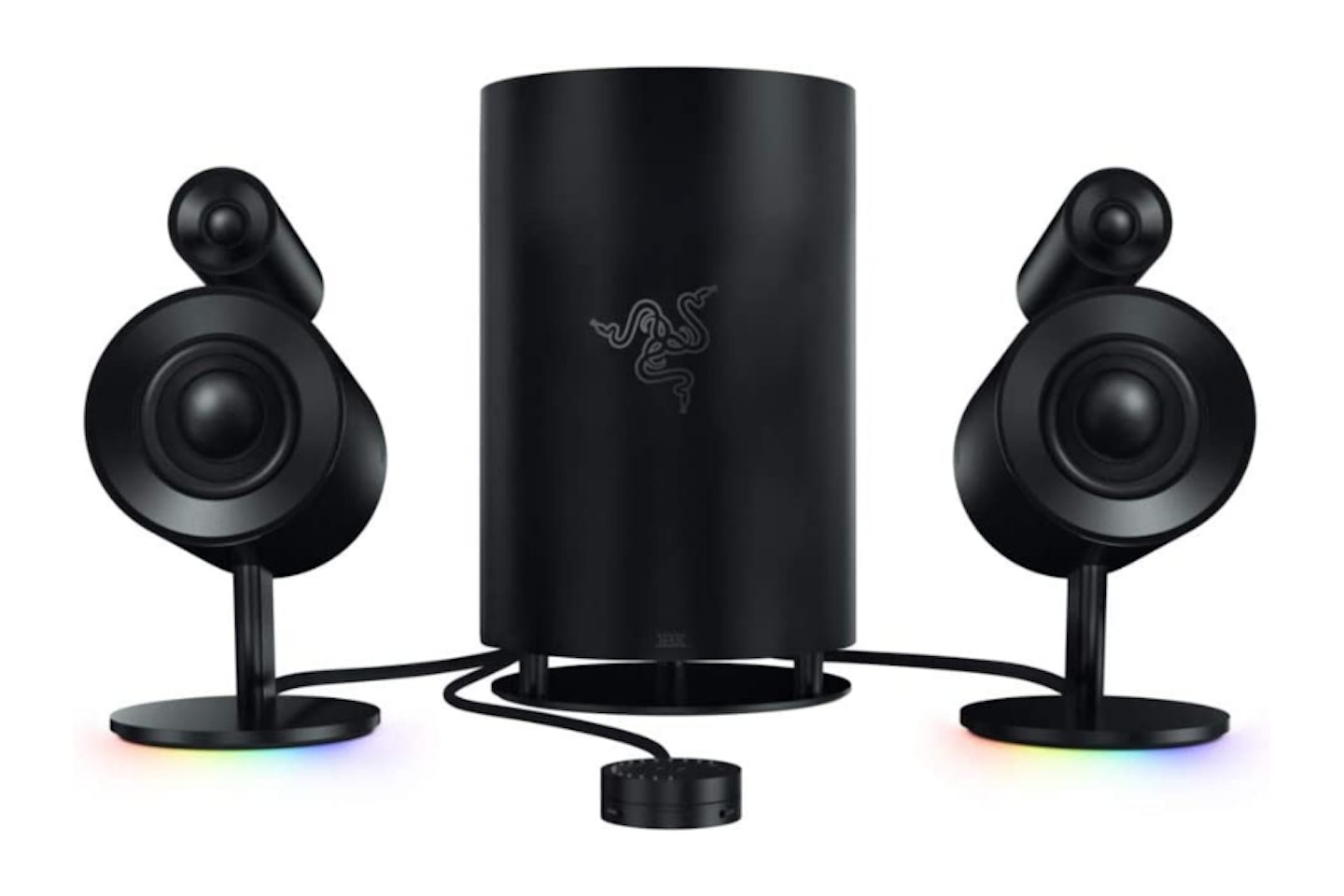
Razer has fast established itself as a leader in premium gear for gamers, but this Nommo Pro is a worthy addition to any PC system. As with all speakers, PC sound systems are no exception when it comes to a staggering range of pricing and features. This one is creeping towards the sort of money you'd normally spend on a home cinema setup - but if your PC is your main source of entertainment, the Nommo Pro is a seriously feature-heavy option.
Despite its gaming credentials, just look at the specs for movies and more: THX Certified and Dolby Virtual Surround Sound, plus a dedicated downward-firing subwoofer. The drivers themselves are coated with Kevlar fibre, so you can expect tight and well-controlled sound. There's even a range of inputs for both analogue and digital devices. Two little additions that really set this off on your desk are the illuminated control pod and Razer Chroma LED lighting. If the Nommo Pro system is a little too steep, we have some other PC speaker recommendations that won't mean cashing in your loot crates.
Pros
- Compact yet powerful
- Innovative modern design
- Integrated lighting
- Control pod
- THX and Dolby Surround
Cons
- Better for games and video - music fans may find these a little lacking
- Can't adjust speaker tilt
| Speakers: | 2 x 0.8" silk dome tweeters (1 x per speaker) | 2 x 3" full range drivers (1 x per speaker) | 1 x downward firing subwoofer |
| Impedance: | n/a |
| Frequency range: | 35Hz to 20kHz |
| Power: | Not specified |
| Weight: | 5.18lbs (speakers), 13.22lb (sub) |
| Dimensions: | Speakers: 14 x 17 x 22 cm. Sub: 27 cm x 41 cm |
| Extra features: | 3 Inch Drivers coated with DuPont Kevlar Custom Woven Glass Fibre 3 Inch Drivers. Bass Knob with Automatic Gain Control |
- Customer review: "These are very stunning-looking speakers. They are a very deep matt black with looks like they cost thousands of pounds. The design is really nice. The build quality is excellent. Then I plugged them in and connected my phone via Bluetooth which blew me away. The stereo separation is really good. The clarity and detail between the treble and mid-range are exceptional. And the bass is very complimentary to a well-balanced sound. I really am impressed all around."
Best studio monitor speakers
There's a good reason why the Kali Audio LP-6 - a speaker sold as a single unit, as opposed to most other studio monitors we've looked at - scores highly here. If you're in the market for something that will perfectly complement any professional Audio equipment, then this single studio monitor is one of the best we've seen. The maximum output is 80W, so although you'll find bookshelf speakers that are more powerful, the whole point of dedicated studio monitors is the purity and clarity of sound - important for any creative sound mixing or professional audio work.
Kali Audio have delivered excellent range and performance in this LP-6 speaker, and that quality is reflected in the price. The downside? If you buy one of these, you'll probably want to buy a second.
Pros
- High specification across the board
- Solid build
- Accurate output
Cons
- Weight means wall mounting will require investing in decent brackets
- You'll want to buy two for stereo-mixing
| Speakers: | 6.5-Inch Optimized Paper, 1-Inch Textile Dome |
| Impedance: | Unknown |
| Frequency range: | 47 Hz - 21 kHz |
| Power: | 80w |
| Weight: | 7.05kg |
| Dimensions: | 22.2 x 26 x 36.2 cm |
| Extra features: | Input gain adjustments |
- Customer review: "I couldn't be happier with how these sound, even in my small "bedroom" setup! I don't have much room OR desk space, but these can be tamed with the switches on the back so you can have them pretty damn close to the wall and sitting on the desk (tho I'd still recommend you get some pads for obvious reasons). The front-facing ports really help a lot in this kind of situation too! As soon as I gave them a test drive I was in love with music all over again"
Best outdoor speakers
Our expert's choices for some of the best outdoor and garden speakers would never have been complete without these hardy Yamahas. Yamaha distilled all of their sound design knowledge into these perfectly formed speakers. They'll pump out 88dB of your music through dedicated woofers and coated tweeters.
If you're looking to deliver high-fidelity Audio with rich, warm bass to your outdoor spaces, the NSAW592s casing is specially treated to withstand all weather types. The subs are waterproof too. That means the whole speaker will maintain its high-quality finish, and those internal components will withstand even the worst of the British weather.
Pros
- Legendary Yamaha design and build
- Waterproof
- Extremely satisfying sound
- Low profile
Cons
- Bass addicts may want more (but will the neighbours?)
| Speakers: | 16cm waterproof cone. Tweeter. 2.5cm fluid-cooled, coated soft dome |
| Impedance: | 6 Ohm |
| Frequency range: | 55 Hz–20 kHz |
| Power: | 150w |
| Weight: | 6.5 Kilograms |
| Dimensions: | 206 x 340 x 170 mm |
| Extra features: | Angled case design, Waterproof |
- Customer review: "I have owned these magnificent speakers for a few days and put simply they are incredible beautiful clear sound I would recommend these speakers to everyone and for the price they are truly amazing, I have them being driven by a Yamaha RX-V685 zoned amp and its brilliant sound."

The best speakers of 2024: Buyer's guide
Choosing the best speakers for you is no simple task. You'll need to avoid some of the common pitfalls and study some of the jargon in our guide below. But before you hit the 'buy' button on those top-of-the-line monoliths, stop for a moment to consider a few things. Getting the basics right first will make for (pun intended) a sound purchasing decision later. Much of this will come down to what kind of listener you are and where. Here are some basic categories to help narrow things down:
Home cinema and TV viewers
There are two main approaches here speaker-wise. Firstly, there's the small or discrete soundbar-type speaker option. These cleverly emulate larger multi-speaker systems to give you a surround effect. And then there are the full-size systems, normally comprising between five to seven or more separate speakers, plus a subwoofer for bass. A typical 5:1 sound setup has there are two front-facing, two rear-facing and the sub. More speakers mean more spatial effects thanks to encoding tech like Dolby Atmos.
Gamers
Gamers can take a similar approach to the above, as they can either opt for a larger multi-speaker system or a soundbar-style alternative. However, they're usually lighter and smaller and have gamer-friendly functions like RGB lighting and headphone/ microphone jacks. They're also normally connected to a PC or console via USB.
Music fans
The nature of music and the 'right' way to listen to it is always hotly debated. But, for us, we think the best setup is the one that sounds the best to you. Normally, any music fan will go for a pair of stereo speakers if they have a stack of hi-fi separates and an amp to connect them to. But, with the advent of multiroom sound and portable wireless speakers, it's becoming increasingly common for music fans to take the high-tech streaming-friendly option and go for active (self-amplified) smart speaker solutions.
Outdoor listeners, travellers and partygoers
Weatherproofing, ruggedisation and protection from dust are the key things to look out for for anyone taking their speaker out and about. But, as with all speakers, you have some options here. If you're looking for a permanent garden audio solution, you should look for weatherproof wired speakers that can withstand the heat and the cold. If you want to be able to move things around, go for a wireless speaker. If you're heading out to the beach or going camping, the size and weight will obviously affect the portability. With all portable devices, check out the average battery life and make sure it'll last the trip.
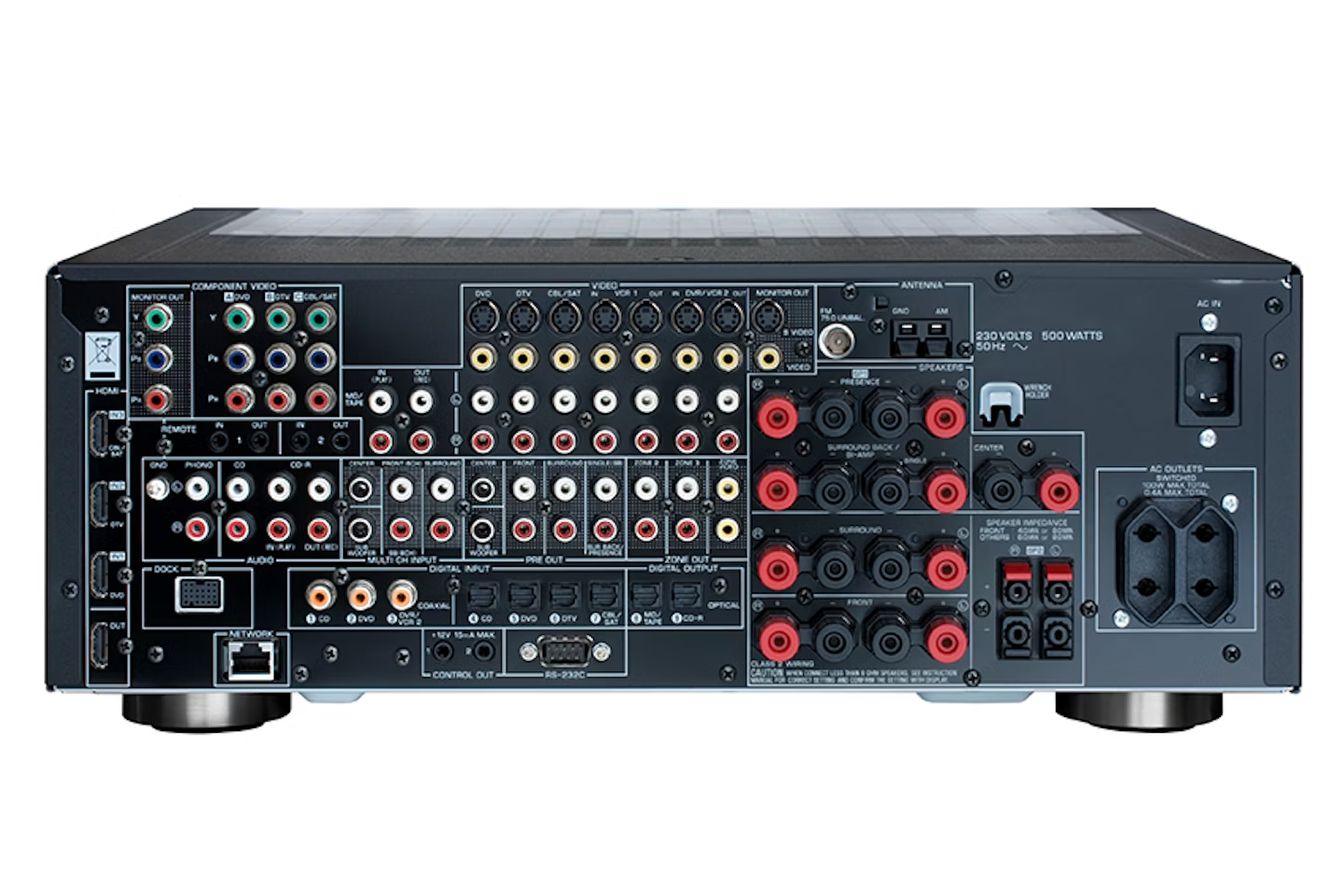
Plan your connections
Most speakers, apart from 'Active' speakers (more on those later), will need a powered amplifier to drive them. If you already have an amplifier, the first thing you should consider is whether you need to upgrade. After all, there's no point in hooking up expensive KEFs to an amp that's well past its use-by date.
Secondly, consider the number of speakers you're looking at having. Obviously, this will vary depending on what you're looking to achieve. A home cinema amp may support 5.1 (five speakers, one subwoofer) or 7.1 or more if you're looking at a full Dolby Atmos setup. A more traditional hi-fi amp may only have connections for two speakers - left and right stereo.
Power rating
Every amplifier has a rating for the amount of power it can push out to your speakers. Normally, as a range expressed in Watts, this is the power output through the speaker terminals to each speaker. Therefore, choosing a speaker that requires more power than your amp can deliver will result in weak, under-par sound and an over-driven amplifier.
Conversely, too much power from the amp can literally destroy speakers that aren't built to take it. So, contrast and compare the power ratings for your choices to match them up. Remember, wattage is a range; As long as the maximum output won't blow your speakers and the minimum will deliver what your speakers need, you're all set.
Impedance
Measured in Ohms, this often generates the most questions from newcomers. This is a measurement of how much the audio signal is impeded or resisted by the speakers. So, let's say your turntable amplifier is built to deliver 20 watts of power at 8 Ohms. This will actually be pushing out more power to account for the 8-ohm resistance of the speakers. A 20-watt speaker rated as 4 Ohm will require a little less power from the amplifier to overcome that level of impedance. This is why it's very important to match up the impedance of your speakers with that of your amplifier. As long as your speakers lie within the stated range of the amp, it's all good.
Choose speakers outside the range, and your sound may be weak. Then your amplifier will be over-driven to achieve higher volumes. Conversely, you run the risk of damaging speakers by pushing too much power onto them when there's not enough resistance. The lower the impedance, the more power is left over for the output, which is why it's easier to blow low-impedance speakers with high-impedance amplifiers.
Active speakers and smart speakers are self-amplified, so impedance won't be an issue here.
Size and placement
Unless you're going for a small or portable speaker, larger speakers that look and sound great for your room will still need to fit and be well-placed.
It goes without saying that anyone who angles their speakers facing a wall or corner at close range is going to be ruining their experience. As is placing them behind furniture or having a speaker's bass ports right up to a wall. But you should also consider where you'll be sitting to listen. Some speakers recommend angling them inward towards the listener. Other models are engineered to do this without being angled at all. As always, read your speaker manual.
Lastly, look around your room. If you have a very sparsely decorated room without carpets or other things to break up reflections, your Audio is probably going to bounce off the walls and create uncomfortable reverb. There are a number of solutions to this, the most obvious are acoustic foam panels, careful furniture placement, or wall hangings.
Plan your wiring
Unless you're going wireless, the correct speaker wire is, naturally, the third element of your setup. There are a few things to consider here - gauge (the thickness of the wire) and what that means for performance, the cable run you'll need to plan for in your room, and your speaker wire connections.
The lower the gauge number, the thicker the wire. In order to choose the correct gauge speaker cable, first match the impedance of the wire to your speaker's impedance rating. Then measure the length of the wire run you'll need from the amplifier to each speaker. Thicker wire is better for longer runs and suffers from less signal loss. As a happy medium, we recommend the GearIT 16AWG Speaker Wire, which sits at around £15 for 100ft of wire.
Buying a massive reel would seem a surefire way to ensure your cables will reach even your ceiling speakers. When you have your wire, measure twice - cut once. And give yourself a few inches of extra wire to account for any unforeseen issues.
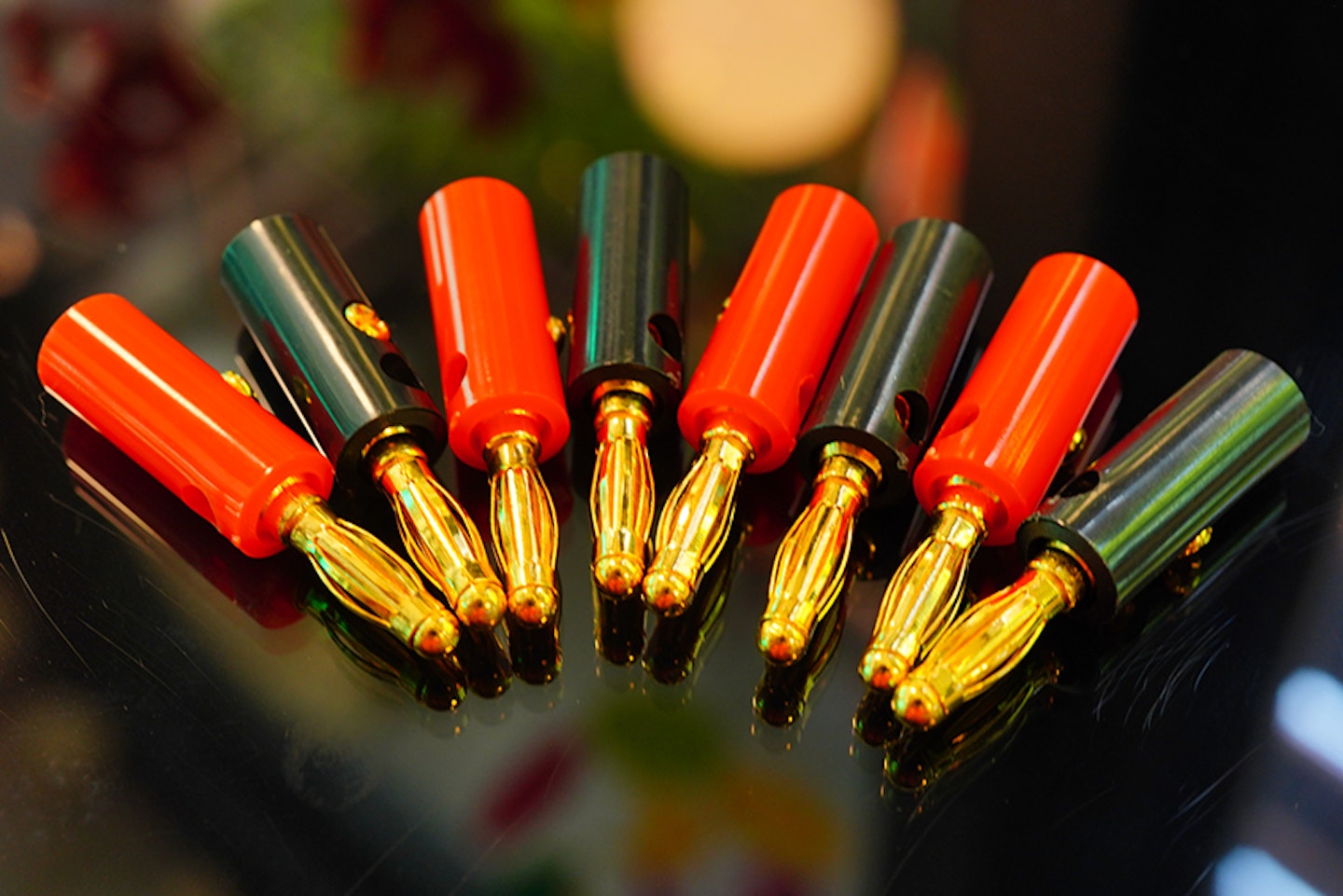
Speaker top tips:
Looks aren't everything
Some manufacturers seem to be in an arms race to attach as much bling and bluster to their speakers as possible. As a general rule, beware of an overabundance of graphics, plastic chrome accents, and showy grilles or cones. Some of the best speaker brands offer a range of models, often with understated looks, but still vary in quality internally. Choose wise
Hearing is believing
Yes, you can still find flashy-looking, affordable speakers today, but how can you tell if they'll perform without hearing them first? You can't. There really is no substitute for having a listen for yourself. Find someone who has the same speakers, or at least an adjacent model, and play your own music through them. If your local retailer has a demo room (or a try-before-you-buy scheme), we recommend you give your speakers a thorough trial. Reviews are your next best resource, but remember: What one person thinks is a well-rounded speaker could be lacking according to a different pair of ears.
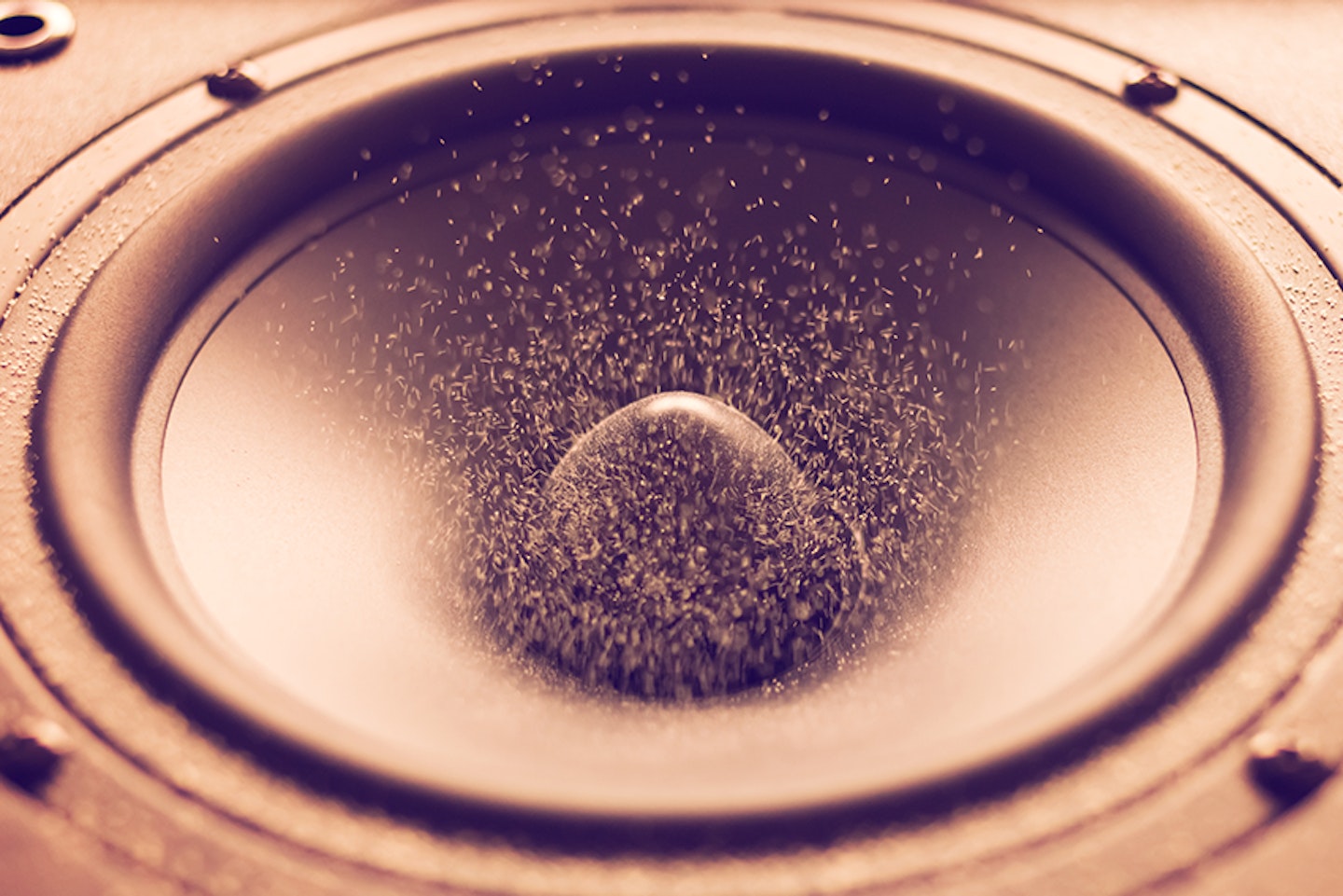
The best speakers: Frequently asked questions
How can I improve speaker sound?
Look for speakers that are well-insulated against reverberation. Some speakers will have spike-type feet that will stop the floor from absorbing bass, others have cushioned rubber feet. Firmly wall mounting a speaker will massively help to isolate the speaker, and you'll be getting truer, unadulterated sound reproduction. Other than that, pairing your speakers with the right amplifier in terms of wattage and impedance will make a massive difference.
Do I need a subwoofer?
A subwoofer is a special kind of powered speaker that just handles deep bass frequencies. You don't always need one, as your main speakers may provide you with enough bass on their own. But some, particularly home cinema fans, like the added boom and thud that a subwoofer can bring to their room for cinematic effect. If you're partial to some late-night listening without waking the neighbours, some of the best headphones of 2024 can deliver deep and satisfying bass and all the rest at affordable prices.
Do I need an amp?
An amplifier is a device that takes low-voltage audio input from your source equipment, typically a turntable or CD player, and amplifies that input. Your music is then output enough power to drive an attached pair of speakers. Passive speakers, therefore, require an amplifier.
Unless you're going for a wireless music player for portability (actively amplified with its own power), a dedicated amplifier is needed to power passive speakers. But this is in no way an afterthought. Your final sound quality is going to depend equally on the quality of the speakers and the quality of the amplifier - get both right, and you'll have a dream system. Get either of them wrong, and you'll have wasted your money.
Why are my speakers distorted at high volumes?
Assuming your speakers aren't damaged or broken, your amplifier may be too powerful for the speaker's drivers and cones. Essentially, attempting to get more volume out of a speaker by feeding it more power is the same as trying to make your car go faster by cramming more fuel into the tank until it overflows. The speaker can only handle so much power. Push it too hard, and the cones will reach their structural limits, stop producing nice vibrations, and start producing uncontrolled ones. Thus, you have distorted sound.
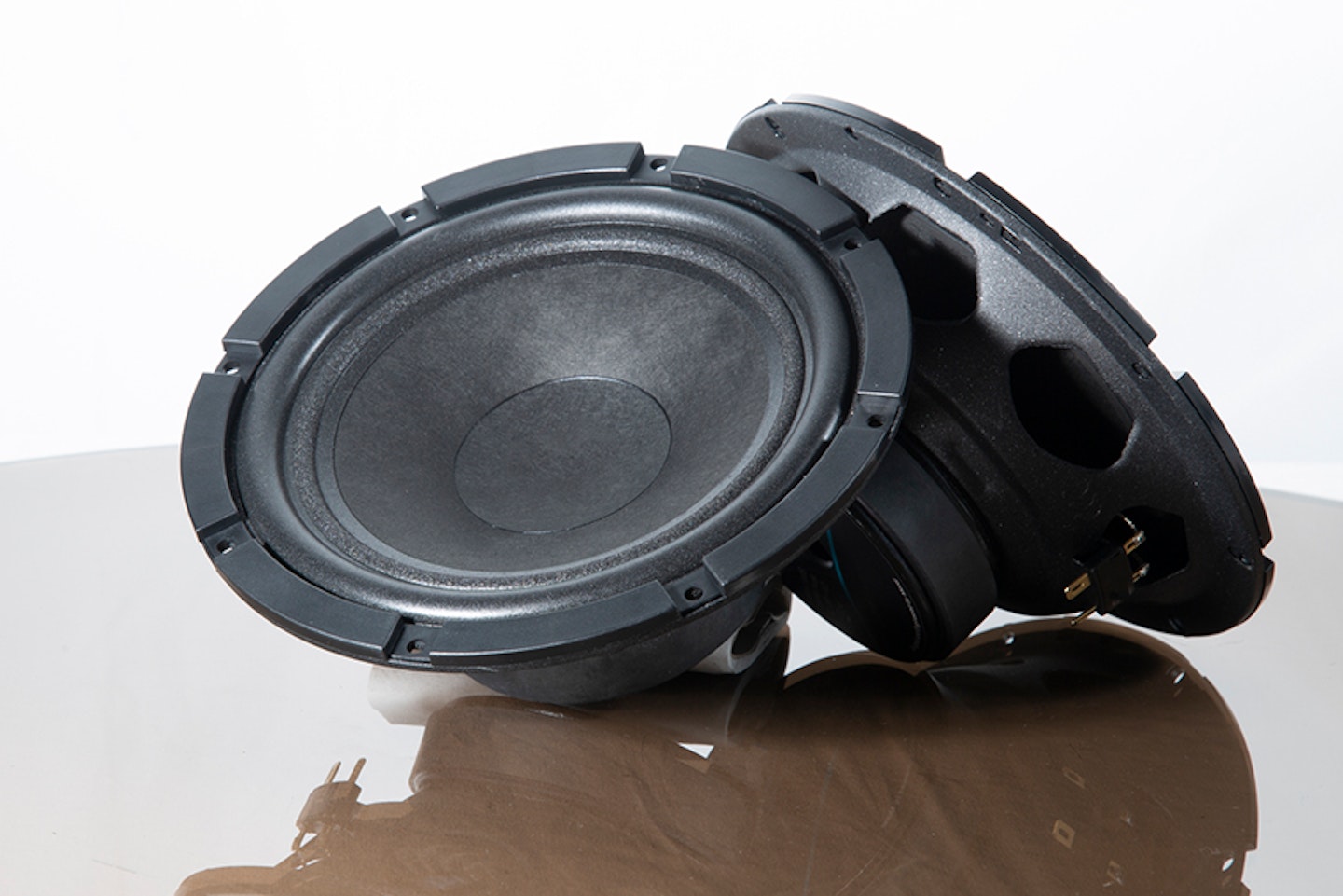
The best speakers: Glossary
The best speakers come with what is possibly the most impenetrable tech jargon of all. And this is particularly true for newcomers to the world of quality audio. Part hard science, part soft aesthetics, plenty are hoodwinked by expensive looks only to be let down by sound quality. Here are some of the most common terms you'll come across, with accessible explanations of each to help you decipher the specs before you buy.
Passive speakers
A passive speaker has no active power or amplifier circuitry. So, you will need to route your sound to them via an external amplifier. Some speakers, like the Edifier R1280T, are active speakers. They don't require an external amplifier.
Active speakers
Likewise, an active speaker is one that has its own power supply and amplifier function. This means that you can hook up any sound source directly to the speakers, usually via an auxiliary input connection, such as an Audio jack or twin phono plugs in the case of speakers for a record player. Because these speakers actively power themselves, they can amplify the music you pipe into them. This, of course, includes all-in-ones like Bluetooth portables and some ceiling speakers.
Watt
Wattage, in regard to sound output and speaker power, is a measure of the strength of the audio signal that drives the speaker. A 100w amplifier has a maximum output of that many watts. So, a speaker rated for a range of, say, 80w - 120w will be able to handle that power input. The wattage between the speaker and amp needs to be compatible to avoid potentially damaging both.
Decibels
A decibel is a measure of sound levels (dBs). While it's an accepted measure of volume, it doesn't correlate with wattage. More wattage doesn't necessarily mean bigger or better volume, or quality, for that matter. Usually, manufacturers specify the amount of dBs that a speaker can produce with a single Watt of power at a 1-metre distance.
Drivers
A driver is a device inside any speaker, be it wired headphones or an external speaker. It converts electrical signals into sound. So it follows larger drivers tend to be able to deliver a more powerful sound with greater accuracy. That said, this isn't always the case, as build material quality also plays an important role.
Tweeters
A speaker has two components: a woofer and a tweeter. A tweeter is responsible for producing high-frequency sounds. They're often a dome shape and may even be independently positionable.
Woofers
A woofer is the part of the speaker that produces low-frequency sounds. You'll commonly see these described by the width of the cone - in inches or centimetres. This will also give you a slight indication of how much range and power they may have.
Phase
As with anything electrical, it's important to not get your wires crossed. Therefore, most speaker wires will come with one side marked with a line to help you match up the terminals on your amp with those on the speakers. So, one will be positive, the other negative. This is the phase of the speaker. If you have a positive wire in the negative terminal and vice versa, some elements of the sound will effectively be working against each other. The result is poor stereo imaging and reduced bass, so match up your positives and negatives, and you'll be in phase.
Frequency Range
This is a measurement, in Hertz (Hz), of the range of sound frequencies that a speaker can reproduce. Our ears can perceive 20 - 20,000 Hz, with the lower number being a lower tone and vice versa.
RCA
An RCA connector is also a phono connector. They are commonly used for left and right audio channels and colour-coded white and red (or black and red) to help when wiring up. Record players, like the Lenco LS-100 we reviewed, often use these too. Most amplifiers will have lots of RCA connections at the back for all of your devices.
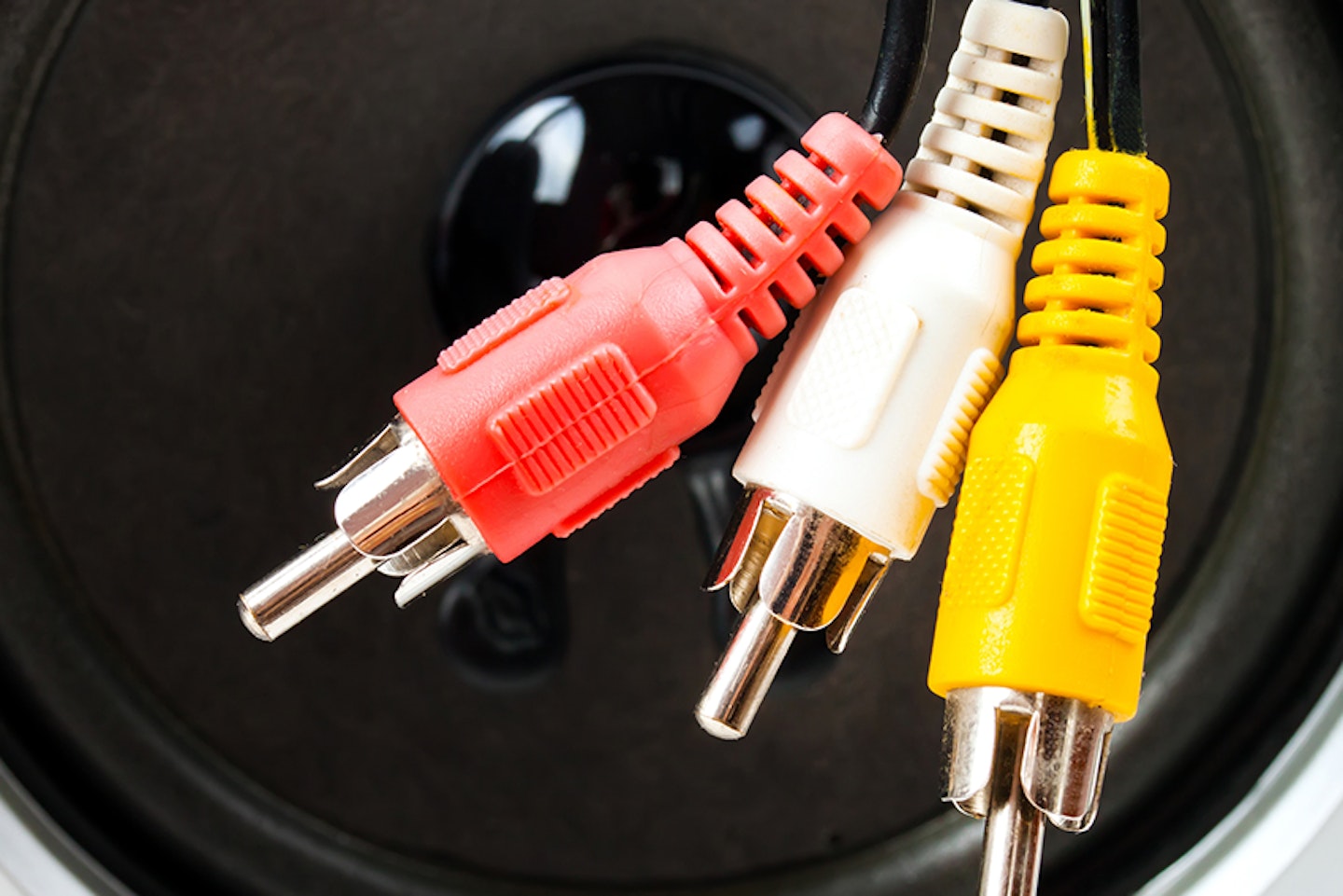
AUX
An amplifier's AUX input stands for 'auxiliary'. This is an extra audio input from any device you'd like to connect. Providing the device has the same connector, you can simply switch the amplifier input to AUX to start listening.
Optical
Optical audio connections are digital, as opposed to RCAs, which are analogue. So, an optical connection uses fibre-optic cabling to transmit sound as data via light waves.
Binding Posts
One of the most common speaker connection types on old and new gear. A binding post is essentially a metal terminal for a speaker wire. They work by providing a hole for your bare wire to go through, kept in place with a binding nut. In addition, sometimes these have holes through the middle of the post that doubles up as jacks for a Banana Plug.
Banana Plugs
Fitted to the end of the speaker wire. They make for a more convenient connection than bare wire wrapped around binding posts. The name comes from the shape of the metal leaves that make up the contact at the end. These plug into speaker inputs - the corresponding Banana Jack.
